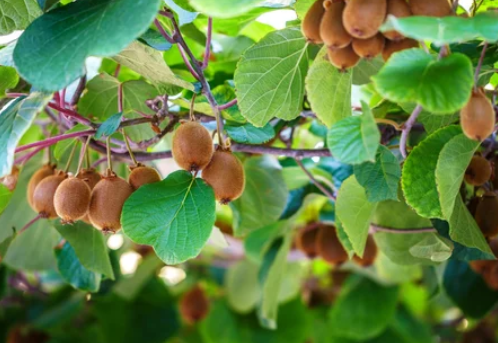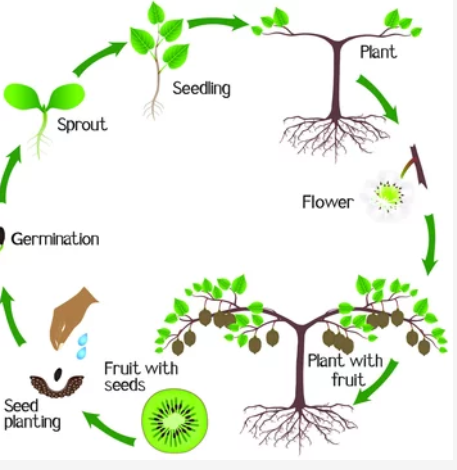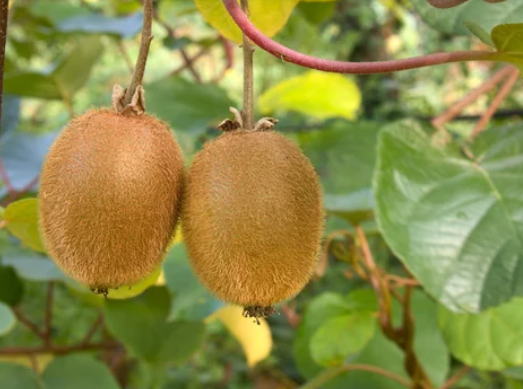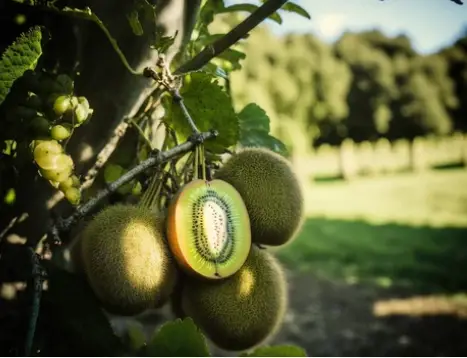If you’re looking for a delicious and nutritious addition to your backyard garden, kiwi plants are an excellent choice.
Not only do they produce a tasty fruit, but they also add a beautiful aesthetic to any landscape.
In this blog post, we will cover the basics of kiwi plant care, so you can enjoy a bountiful harvest.
Choosing the Right Location

When it comes to growing kiwi plants, location is everything. Kiwi plants thrive in full sun and prefer well-draining soil.
They also need a sturdy trellis or support system to climb.
When selecting a location for your kiwi plant, make sure it is at least six to eight feet away from any structures or other plants.
This will allow the plant to spread out and get the sunlight it needs.
Preparing the Soil

Before planting your kiwi plant, it’s essential to prepare the soil properly.
Kiwi plants prefer slightly acidic soil with a pH level of around 5.0 to 6.5.
You can add organic matter such as compost or well-rotted manure to improve soil fertility and drainage.
Avoid using chemical fertilizers, as they can damage the delicate roots of the kiwi plant.
Planting the Kiwi Plant
Once you have chosen the right location and prepared the soil, it’s time to plant your kiwi plant.
Kiwi plants should be planted in the early spring or late fall. Before planting, soak the roots of the plant in water for at least an hour to prevent them from drying out.
Dig a hole deep enough to accommodate the root system of the plant and make sure the soil is firm around the base of the plant.
Supporting the Plant
Kiwi plants are vines that need support to grow.
A trellis or support system should be installed at the time of planting.
It’s important to make sure the trellis is strong enough to support the weight of the mature plant.
As the plant grows, it should be tied to the trellis using soft twine or cloth. This will help to keep the plant upright and prevent it from bending or breaking.
Watering and Fertilizing
Kiwi plants need regular watering, especially during the hot summer months.
The soil should be kept moist but not waterlogged. If the soil is too wet, it can cause root rot, which can be fatal to the plant.
Fertilize your kiwi plant with organic matter such as compost or well-rotted manure in the early spring and mid-summer.
Avoid using chemical fertilizers, as they can damage the roots of the plant.
Pruning the Plant
Pruning is an essential part of kiwi plant care. It helps to keep the plant in good shape and promotes healthy growth.
Pruning should be done in the late winter or early spring before new growth begins.
Remove any dead or diseased branches, and cut back the remaining branches to encourage new growth.
Prune any lateral branches that are growing from the main stem, as they can reduce fruit production.
Harvesting the Fruit
Kiwi fruit is ready to harvest in late fall, usually around October or November.
The fruit should be picked when it is fully ripe but still firm. If the fruit is left on the vine for too long, it can become overripe and mushy.
Kiwi fruit can be stored in a cool, dry place for up to a month.
Kiwi Plant Care Tips

Troubleshooting Common Problems:
While kiwi plants are relatively easy to grow, they can still experience problems from time to time.
This subtitle could cover common issues like pests, diseases, and nutrient deficiencies, and provide tips on how to identify and address these problems.
Propagating Kiwi Plants:
If you want to expand your kiwi plant collection or share your plants with friends and family, propagating kiwi plants is a great option.
This subtitle could cover methods for propagating kiwi plants, such as stem cuttings or layering, and provide step-by-step instructions for each method.
Choosing the Right Kiwi Variety:
Not all kiwi plants are created equal, and some varieties may be better suited to your growing conditions or taste preferences than others.
This subtitle could cover different kiwi varieties, such as hardy kiwi or fuzzy kiwi, and provide information on their flavor, size, and growing requirements.
Making the Most of Your Harvest:
Once you’ve harvested your kiwi fruit, there are many ways to enjoy it beyond eating it fresh.
This subtitle could cover ideas for using kiwi fruit in recipes, such as smoothies, salads, or desserts, as well as tips for storing and preserving the fruit.
Taking Your Kiwi Plant Care to the Next Level:
If you’re an experienced kiwi grower or just looking to take your plant care skills to the next level, this subtitle could cover advanced topics such as grafting, pruning for specific growth habits, or soil testing and analysis.
It could also provide resources for further reading or expert advice.
Growing Kiwi Plants in Containers:
If you don’t have a lot of space in your yard, or you want to try growing kiwi plants indoors, container gardening is a great option.
This subtitle could cover the basics of growing kiwi plants in containers, such as selecting the right size pot and soil, providing support, and managing watering and fertilizing.
Maximizing Your Kiwi Plant’s Yield:
While kiwi plants can be relatively prolific, there are steps you can take to increase your plant’s yield and fruit size.
This subtitle could cover techniques such as summer pruning, adjusting watering and fertilizing schedules, and ensuring adequate pollination.
Companion Planting with Kiwi Plants:
Kiwi plants can benefit from being planted near certain other plants, such as those that provide shade, attract pollinators, or help repel pests.
This subtitle could cover ideas for companion plants, such as herbs or flowers, and explain the benefits of each.
Harvesting and Storing Kiwi Fruit:
Knowing when and how to harvest kiwi fruit is essential for maximizing their flavor and nutritional content.
This subtitle could cover the signs of when kiwi fruit is ready to harvest, as well as tips for storing and ripening the fruit once it’s been picked.
Caring for Kiwi Plants in Different Climates:
Kiwi plants can thrive in a range of climates, from mild to tropical, but different varieties may be better suited to different conditions.
This subtitle could cover tips for caring for kiwi plants in different climates, such as adjusting watering and fertilizing, providing winter protection, or selecting appropriate varieties.
Final Thoughts
No matter which aspect of kiwi plant care you’re interested in, it’s important to approach it with patience and attention to detail.
Kiwi plants can take a few years to start producing fruit, but with the right care, they can provide a bountiful harvest for decades to come.
Whether you’re a seasoned gardener or just starting out, growing kiwi plants is a fun and rewarding way to add a touch of tropical flavor to your garden.


